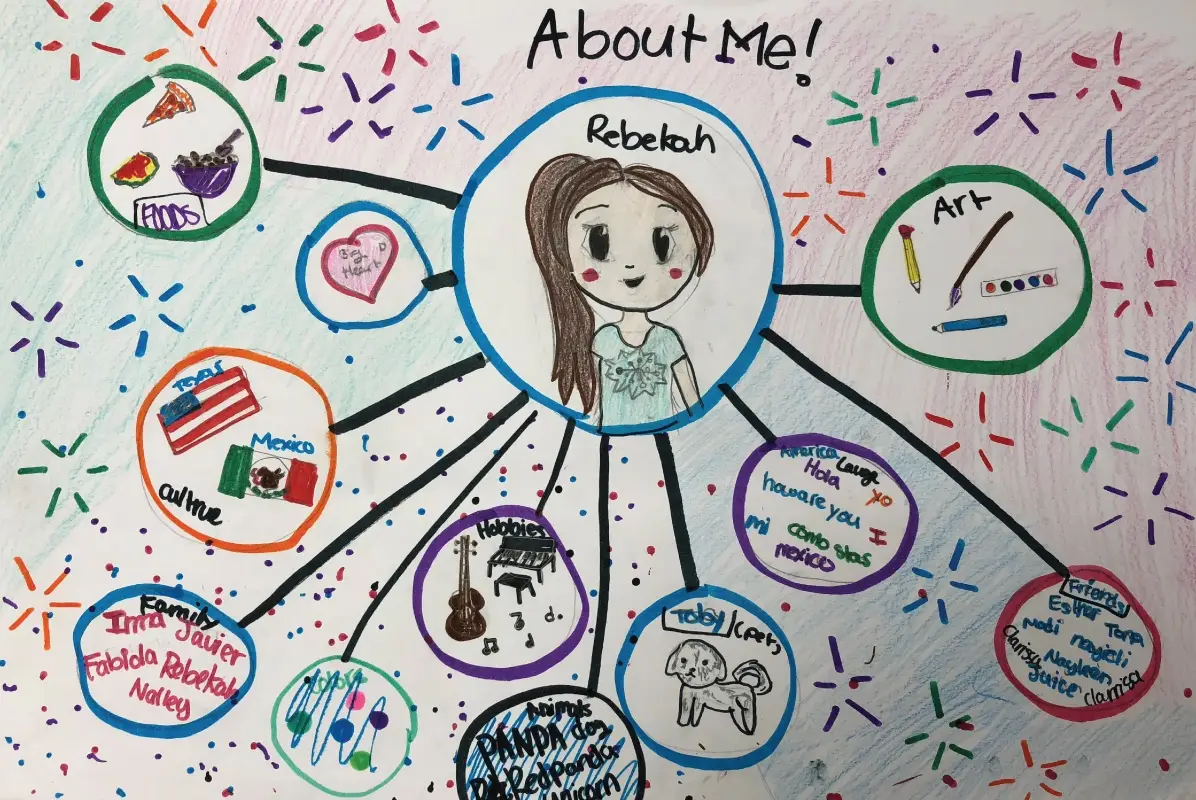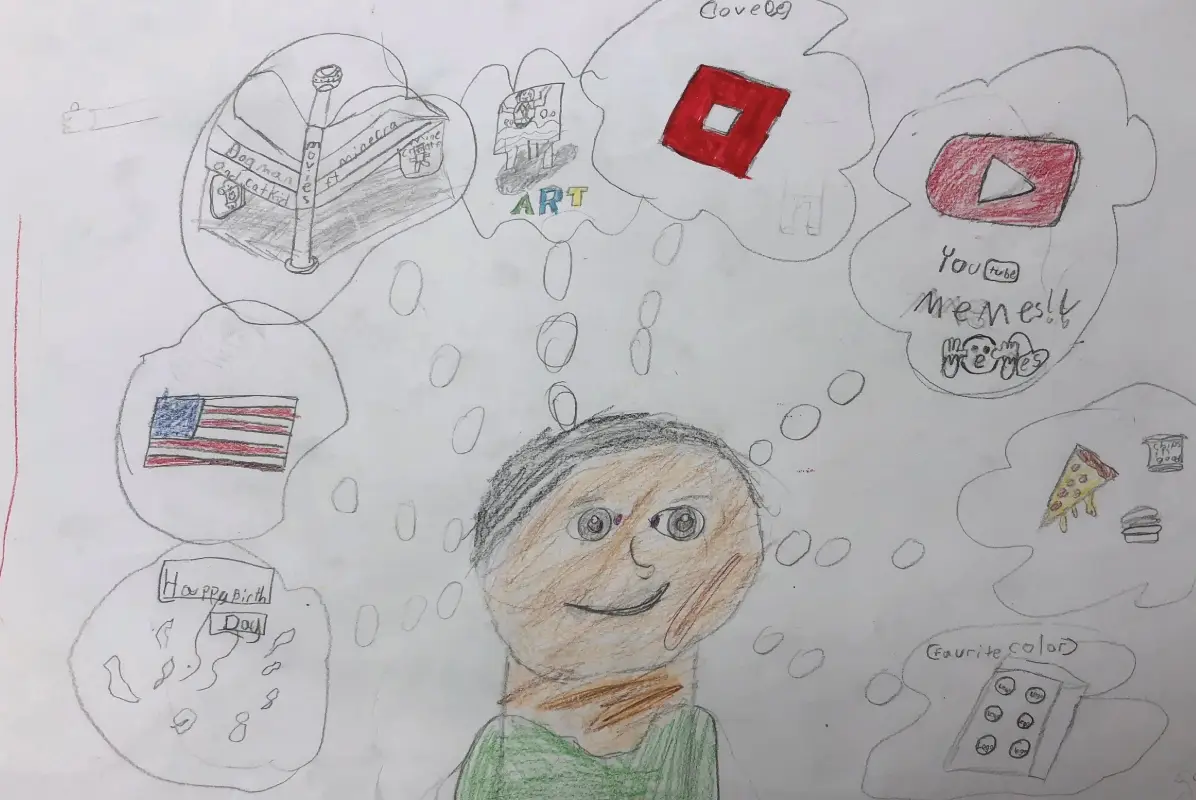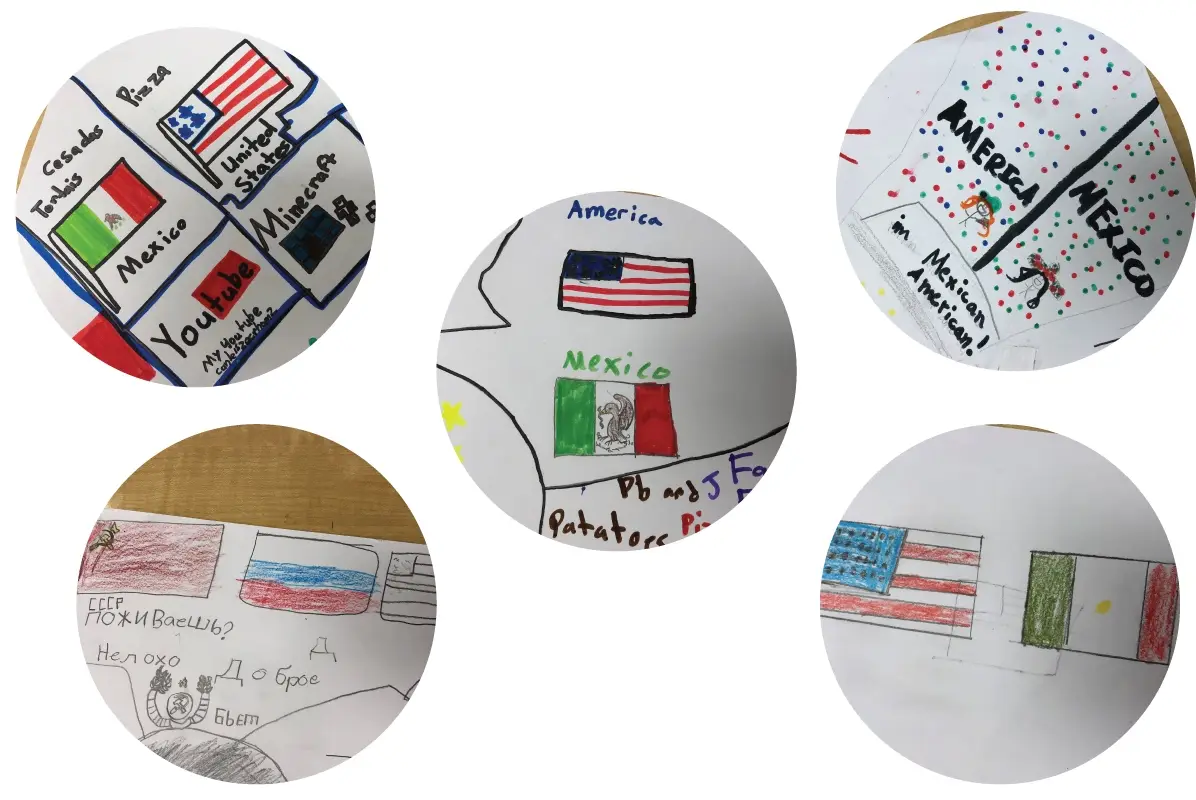I have taught in settings where most students are Spanish speaking, but they come from a variety of different cultures. As a Mexican-American, I know that each of these cultures is unique and has a big impact on a child’s identity.
I noticed that many of my students didn’t focus too much on their own unique identity and in fact didn’t really even notice the differences within the class. It’s great that students felt like our classroom was an equitable space, but I also wanted to explore why this was. I felt that they should have a sense of their own identity as well as that of their peers. When kids develop a strong sense of self, they’re better prepared to enter the world and hold on to their own identity rather than assimilate or change. Plus, having a good sense of self can protect them from a culture shock when they leave the bubble of an all Spanish-speaking classroom to the real world of a variety of races, religions and cultures.
I remember the first time I felt like a minority. My best friend Juan and I went to visit Auggie’s Coffee Shop in Redlands, California where the demographic is 74% Caucasian. I grew up in neighborhoods that had a mixed conglomerate of ethnicities, went to public schools with the same diverse demographic, and later attended UC Riverside – a place people referred to as “the most diverse UC.” I remember the strange feeling that came over me. As we were exploring an outside Arts Festival in the alley, I started to people watch. I started to realize that everyone around me was white. And suddenly, I felt strange. I felt uncomfortable. Not because those that were there were purposely making me feel out of place, but because I was not use to being in a setting that made me feel left out. All of my life I had been the “majority” in the spaces I lived or worked.
Throughout my childhood, I was surrounded by other people of color. I felt comfortable speaking both English and Spanish. My foods, celebrations, and culture weren’t different or strange. They were just normal life. But as I grew older and my circle expanded, I started to see that what I thought was normal was different for others. I started to feel strange about inviting people over to my house, especially if my friends were white. I was intimidated to speak Spanish in front of some of my friends when I called my mom on the phone. If I ever wanted to invite friends over for a birthday party, I wasn’t sure what kind of birthday party to have. We all have a time in our lives where all we want to do is fit in. I wanted to assimilate and be ordinary, not unique. Identity is important because even when you are raised in a place where most people look like you, that does not prepare you for when you leave that space. It is important to stay true to your identity when it is tested. It is important to feel like you can still be an authentic you. I have never encountered a workplace or space where my identity was not accepted, and yet I’ve still experienced these feelings of “otherness.” So imagine those who have encountered these negative experiences. That is why understanding who you are and what that means is such a vital lesson to help guide our youth to discover.
Fortunately, I eventually learned to be proud of who I was. I felt grounded in my sense of self and had a strong identity. I learned that what makes you different in high school makes you cool in college! I embraced my cultural heritage and values. I still felt the occasional urge to assimilate to mainstream culture, but I didn’t feel the need to abandon my values. And on rare days when I begin to feel this way again, I reflect on understanding the why.
Self-portrait activity
In an effort to pass this same strong sense of identity to my students, I had my students create a self-portrait activity where they constructed a “roadmap” of themselves on paper. I had them create puzzle pieces around their self-portrait, and decorate each piece with something that made up a part of their identity. This was not limited to their ethnicity or home language, but really encompassed many other areas. It could be their favorite foods, the flag from their country of origin, their favorite music, their hobbies, and even style and the way they chose to dress outside of their uniforms. Their identity is really what made them unique, what made them themselves.

Next, we gathered in a circle and each student shared about his or her self-portrait. We talked about how each of us is unique, but we also shared our similarities. I encouraged students to speak up when they noticed similarities. I heard comments like, “Oh my family is from El Salvador, but we eat that, too!” or “My mom likes soap operas, too!”

This conversation was not the only time we addressed identity in the classroom, but it was a very concrete and tangible way to begin to introduce the idea of embracing a strong sense of self. At the end of the day, I want my students to find pride and value in their own identity, to remain grounded in their personal values, and to hold true to who they are even as they encounter people from different backgrounds and perspectives. Diversity is what makes us great, and I hope that each of my students can face the challenges of racial diversity with confidence and pride in what makes them who they are.
As teachers, we have a responsibility to get to know who our students are. It took a while for me to understand this because really knowing who your kids are is not always just about race. Identity is bigger than that. And I know that I haven’t always done a great job at doing this, but I know that I will continue to try, as I hope others will too.

Share with
Related Resources